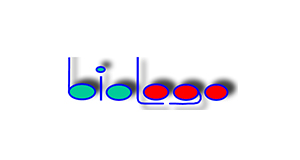Ki-67, Cell Cycle Marker (MIB-1)
Ki-67, Cell Cycle Marker (MIB-1), Monoclonal, IgG1, Clone: MIB-1
Clone: MIB-1
Background: In retrospective studies the intensity of staining and the frequency of Ki-67 expression in cell nuclei was interpreted as a prognostic factor for the malignancy of tumours (Gerdes et al., 1987). Ki-67 Protein is a nuclear protein, which is ubiquitous present during cell division, that means in all phases of mitosis (S1, G1, G2 and M phase). The protein is strongly exprimed in proliferating tissues e.g. embryonal tissue and rapidly growing tumours. Ki-67 nuclear protein.
Positive Control: Breast or colon carcinoma
Immunogen: Human nuclear Ki-67 antigen
Purification Method: Antibody solution in stabilizing phosphate buffer pH 7.3. Contains 0.09 % sodium azide**. The volume is sufficient for at least 50 immunohistochemical tests (100 µl working solution / test). Use appropriate antibody diluent e.g. BIOLOGO Art. No. PU002, if further dilution is required.
References: 1. Gerdes J., Schwab U., Lemke H., and Stein H. (1983) Production of a mouse monoclonal antibody reactive with a human nuclear antigen associated with cell proliferation. Int. J. Cancer 31; 13-20. 2. Gerdes J., Stein H., Pileri S., Rivano M.T., Gobbi M., Ralfkiaer E., Nielsen K.M., Pallesen G., Bartels H., Palestro G., and Delsol G. (1987) Prognostic relevance of the tumour-cell growth fraction in malignant non-Hodgkin's lymphomas. Letter to the editor: Lancet ii, 448-449. 3. Gerdes J., Becker M.H.G., Key G., and Cattoretti G. (1992) Immunohistochemical detection of tumour growth fraction (Ki-67 antigen) in formalin-fixed and routinely processed tissues. J. Pathol., 168; 85-86. 4. Kubbutat M.H.G., Cattoretti G., Gerdes J., Key G., (1994) Comparison of monoclonal antibodies PC10 and MIB-1 on microwave-processed paraffin sections. Cell Proliferation 27; 553-559.
UniProt: P46013
Caution: *These antibodies are intended for in vitro research use only. They must not be used for clinical diagnostics and not for in vivo experiments in humans or animals. ** The preservative sodium azide is known to be poisonous and potentially hazardous to health. It should be handled only by trained staff. Despite of the product's low azide concentration it must be handled with care. Dispose according to regional rules!
Background: In retrospective studies the intensity of staining and the frequency of Ki-67 expression in cell nuclei was interpreted as a prognostic factor for the malignancy of tumours (Gerdes et al., 1987). Ki-67 Protein is a nuclear protein, which is ubiquitous present during cell division, that means in all phases of mitosis (S1, G1, G2 and M phase). The protein is strongly exprimed in proliferating tissues e.g. embryonal tissue and rapidly growing tumours. Ki-67 nuclear protein.
Positive Control: Breast or colon carcinoma
Immunogen: Human nuclear Ki-67 antigen
Purification Method: Antibody solution in stabilizing phosphate buffer pH 7.3. Contains 0.09 % sodium azide**. The volume is sufficient for at least 50 immunohistochemical tests (100 µl working solution / test). Use appropriate antibody diluent e.g. BIOLOGO Art. No. PU002, if further dilution is required.
References: 1. Gerdes J., Schwab U., Lemke H., and Stein H. (1983) Production of a mouse monoclonal antibody reactive with a human nuclear antigen associated with cell proliferation. Int. J. Cancer 31; 13-20. 2. Gerdes J., Stein H., Pileri S., Rivano M.T., Gobbi M., Ralfkiaer E., Nielsen K.M., Pallesen G., Bartels H., Palestro G., and Delsol G. (1987) Prognostic relevance of the tumour-cell growth fraction in malignant non-Hodgkin's lymphomas. Letter to the editor: Lancet ii, 448-449. 3. Gerdes J., Becker M.H.G., Key G., and Cattoretti G. (1992) Immunohistochemical detection of tumour growth fraction (Ki-67 antigen) in formalin-fixed and routinely processed tissues. J. Pathol., 168; 85-86. 4. Kubbutat M.H.G., Cattoretti G., Gerdes J., Key G., (1994) Comparison of monoclonal antibodies PC10 and MIB-1 on microwave-processed paraffin sections. Cell Proliferation 27; 553-559.
UniProt: P46013
Caution: *These antibodies are intended for in vitro research use only. They must not be used for clinical diagnostics and not for in vivo experiments in humans or animals. ** The preservative sodium azide is known to be poisonous and potentially hazardous to health. It should be handled only by trained staff. Despite of the product's low azide concentration it must be handled with care. Dispose according to regional rules!
| SKU | BILKI500 |
|---|---|
| Manufacturer | BioLogo |
| Manufacturer SKU | KI500 |
| Package Unit | 5 ml |
| Quantity Unit | STK |
| Reactivity | Human |
| Clonality | Monoclonal |
| Application | Immunohistochemistry (frozen), Immunohistochemistry (paraffin) |
| Isotype | IgG1 |
| Host | Mouse |
| Product information (PDF) | Download |
| MSDS (PDF) | Download |

 Deutsch
Deutsch







